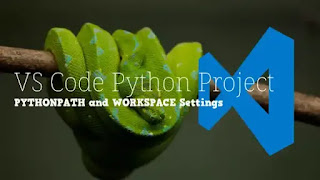Essential PYTHONPATH and Workspace Settings for Python Projects in VS Code
In this blog post, we will explore the importance of following a standardized set of steps when working on Python projects in Visual Studio Code (VS Code). These steps will help streamline your development process, enhance code organization, and improve overall productivity. Let's dive in!
Step 1: Adding the .env File to the Project Root Directory
The .env file is used to define environment variables for your project. It is essential for managing sensitive information such as API keys, database credentials, or any other configuration details. By placing this file in the project's root directory, you ensure that it remains easily accessible and can be loaded automatically by your code.
To create the .env file, follow these steps:
Create a file named ".env" in the project's root directory.
Open the file and add the following content:
PYTHONPATH=path_to_project_folder/
Remember to replace path_to_project_folder/ with the actual path to your project folder. This environment variable specifies the Python module search path, allowing your code to locate modules and packages within your project.
For windows: PYTHONPATH=d:\\destination\\projectfolder. And for linux and mac: PYTHONPATH=/path/to/projectfolder/
Step 2: Configuring VS Code Workspace Settings
VS Code provides workspace settings that allow you to customize the development environment according to your project's requirements. By configuring the settings.json file within the .vscode directory, you can define environment variables specific to your project.
To set up the workspace settings, follow these steps:
Create a folder named ".vscode" in the project's root directory if it doesn't already exist.
Inside the .vscode folder, create a file named "settings.json."
Open the file and add the following content:
{
"terminal.integrated.env.linux": {
"PYTHONPATH": "${workspaceFolder}"
}
}
Modify the above content as needed based on your operating system (replace "linux" with "osx" for macOS or "windows" for Windows).
Conclusion
By following the steps outlined in this blog post, you can establish a solid foundation for Python project development in VS Code. The inclusion of the .env file and workspace settings ensures proper environment management. Remember to continuously explore additional tools, libraries, and best practices to further optimize your development workflow. Happy coding!





